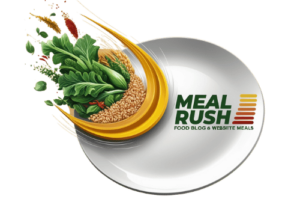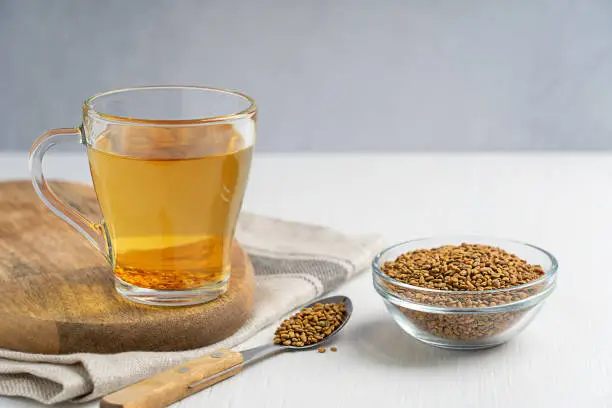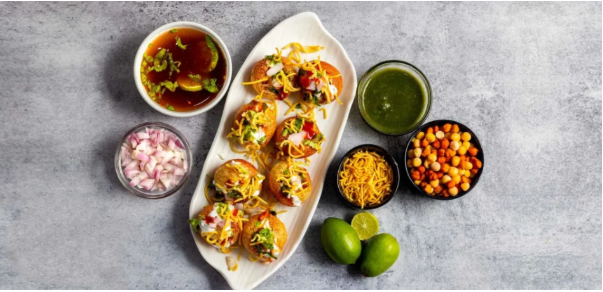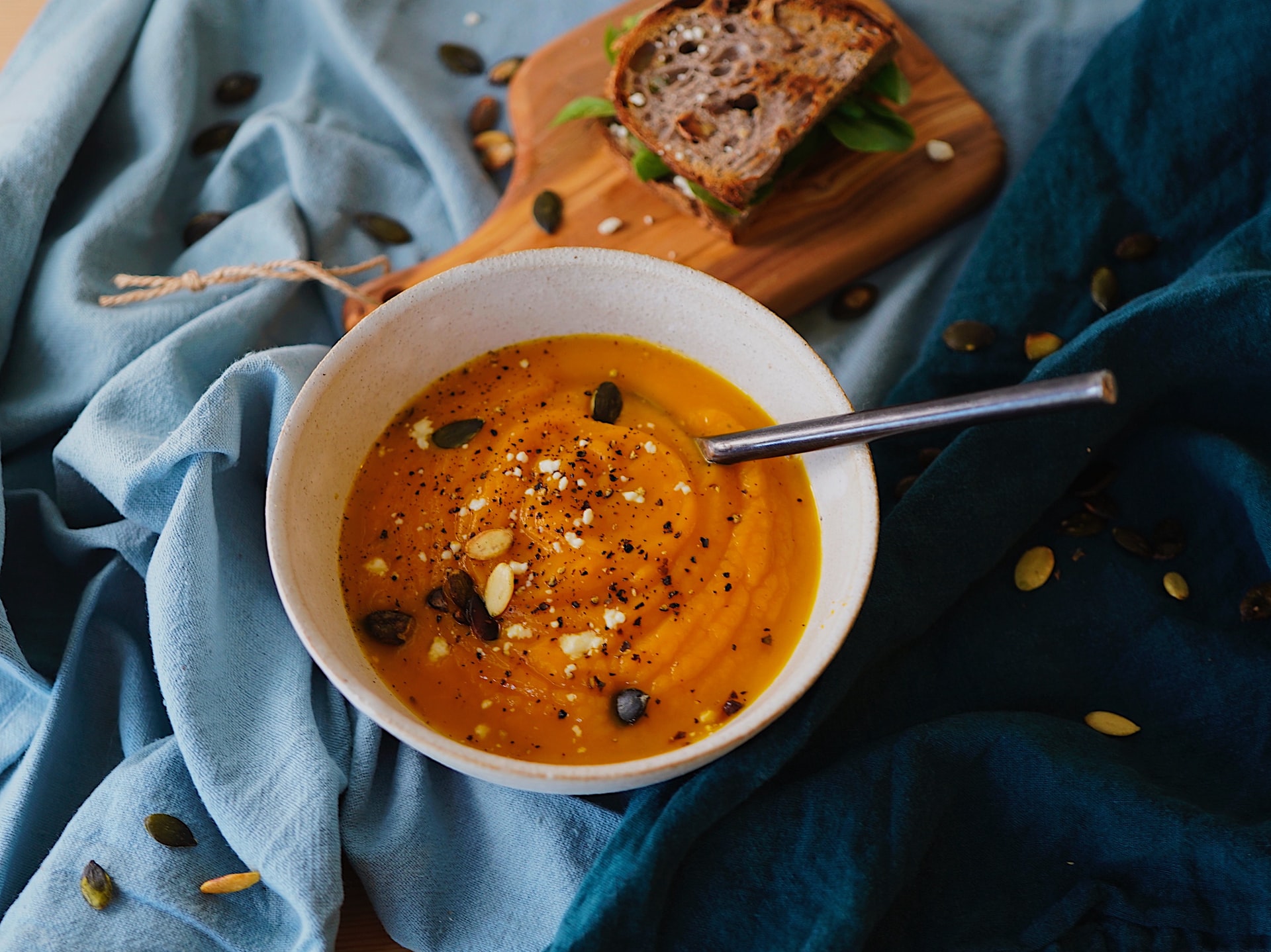Pakistani food tells the story of culture, history and tradition. Each plate contains a mixture of spices that reflect the rich diversity of the country. From road suppliers to luxury hotels, food is an essential part of daily life. The smell of fresh naan, the taste of spicy curry and sweetness of traditional desserts are unforgettable moments.
Food in Pakistan is not just about taste It’s about family ceremonies, protocol and hospitality. Each region combines its own experience, which is unique and full of diversity. Even if you are in Karachi, Lahore, Peshawar or Quetta, the taste changes, but love remains the same for food.
History of Pakistani Food
Pakistani food carries the impact of many cultures. The roots go back to the Mughal empire, where rich dishes like Biryani and Korma became popular. The handles and passengers also brought spices, making the food more colorful and tasty. Answer shaped food, Afghan and central stylish meat launched dishes.
In the south, Arabia and the Persian depth touches to taste. The British board later introduced new cooking methods, but the local taste was always strong. After independence in 1947, regional food was combined together, giving Pakistan a unique identity in the kitchen. Today, each record still has a piece of history and tradition.
Regional Flavors of Pakistani Food
Every province of Pakistan creates a unique identity through food. Geography, lifestyle, and climate shape the cuisine. You’ll notice clear differences when you travel across the country.
Khyber Pakhtunkhwa Cuisine
The pakistan food in Khyber Pakhtunkhwa carries a bold and rustic taste. This area is known for its love for meat and bread. Cooking often contains small or open flames, which gives dishes a smoky taste. Food here seems simple, but warm, showing people’s mountain lifestyle.
Chapli Kebab
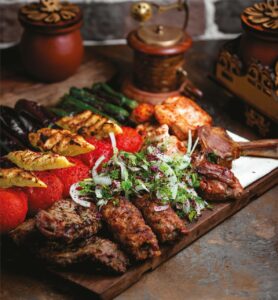
One of the most famous kitchens is Chapali Kebab. Chefs use mixed meat with onions, tomatoes and crushed coriander seeds. The mixture makes flat chops, which are fried until golden and sharp. Each bit is juicy, full of spices, and there is some touch. People usually like chapali kebabs with warm naan and a fresh chutney. Stalls in Peshawar warmed them and made them an attempt.
Kabuli Pulao
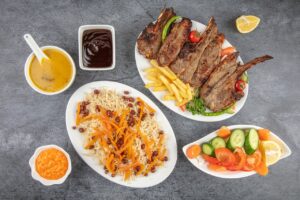
Kabuli pulao casseroles reflect the Afghan effect on the food in the region. This rice dish mixes sweetness and taste in a tub. Chefs with long -nagging rice carrots, raisins and tender lambs. The result is soft rice, which is the blast of sweetness from dry fruit and tastes rich in meat. Families often serve it in meetings and ceremonies, making it a plate of pride in Peshawar.
Lamb Karahi
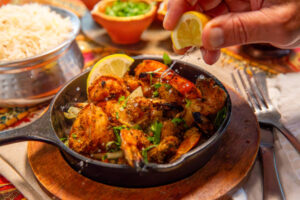
Lamb Karahi is another feature that wins the heart. In tomatoes, garlic and green chilies gradually cook lamb. The taste is formed because the meat is tender and the sauce becomes thick. Finally, fresh coriander is added, which fills the dish with scent. Served directly from Karahi, such as a Karahi, it is completely associated with Naan or Roti.
Khyber Pakhtunkhwa food stands out because of its honesty and depth. It’s less about the decoration and more about the strong flavor that leaves a memory. Each dish tells you about the warmth and strength of the people of the region.
Balochistan Cuisine
Balochistan gives you rustic food with bold taste. The kitchen often reflects tribal style where meetings are lovely and the food is prepared in unique ways. The entire lamb’s roast, ground bread and meat prepared with steam are some highlights showing the deep food traditions in the region. Each plate appears to be warm and rich, which is often designed to share between families and communities.
Sajji
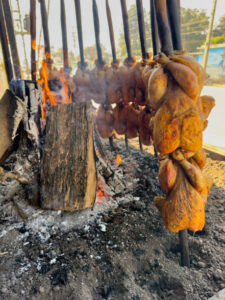
Sajji stands as a sign of Balochistan’s signature dish. A whole lamb is marinated with salt and then filled with rice. By roasting slowly on an open fire, it gives a smoky taste that remains unmatched. Outdoors and soft, juicy meat inside the outside makes Sajaji a meal that people will never forget.
Dampukht
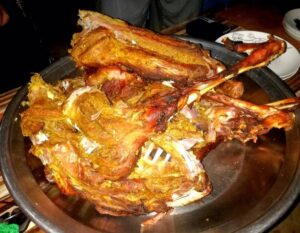
Dampukht means cooking slowly. The meat and spices are sealed inside the tools so that the steam can do their magical work. The process locks the juice and becomes tender, delicious and aromatic of meat. It is often prepared for special occasions, making it a right associated with the festival.
Kaak Bread
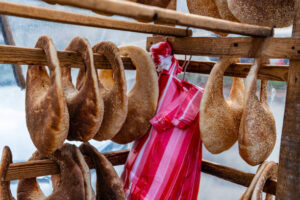
Kaak Bread is a roti that looks simple, but bears the tradition. The dough is flapped against the hot soil walls in an oven until it turns into a stiff, crispy bread. The locals usually like it with Sajji, and together they create an ideal balance between crunch and smokey prosperity.
Punjab Cuisine
Punjab Cuisine has a heart of rich taste, creamy curry and cordial foods that make each bit feel like a celebration. The food here shows a love for warmth, hospitality and great meetings. Food is often filled, prepared with generous use of ghee, butter and spices that give bold flavor.
Chicken Karahi
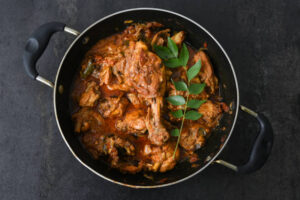
One of the most favorite dishes of Punjab, chicken karahi, is quickly prepared in a deep, pan -like pan known as Karahi. A foundation of fresh tomatoes, garlic and green chili gives the dish a living taste. Garnished with thin slices of ginger and fresh coriander, it becomes a dish that people often like with naan or bread. This is not just food – it’s a gathering point for Punjabi hospitality.
Saag and Makki di Roti
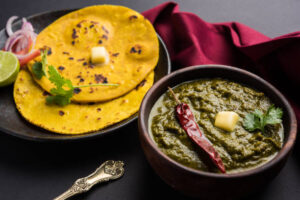
This traditional combination takes deep roots to the Punjabi villages. The green layers with mustard vegetables and spinach, gradually boil with spices until it turns into a nutritious, earthy. This added corn de roti, a flat bread made of cornmeal. A generous doll at the top provides prosperity, transforms food into a winter favorite that feels both rustic and comfortable.
Lassi
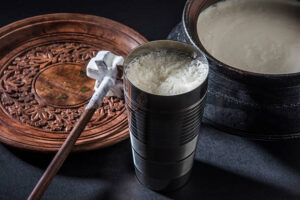
No Punjabi food is complete without lassi. This curd -based drink can be sweet or salty and is often served in long, heavy glasses. It cools the body after a spicy party and refreshes the mind. In Punjab, lassi often comes on top with cream, causing food in the form of food.
Sindh Cuisine
Sindh is known for bold use of spices, chili and tango flavors that give the food a violent kick. The dishes often blend the acidity with heat, making the dishes both delicious and satisfactory. The influence of the Indus River and the Arab Sea also provides a strong seafood performance to the Sindhi food. Whether it is a rice dish, a curry or fried fish, the food of Sindh reflects the culture of love for warmth, hospitality and strong taste.
Sindhi Biryani
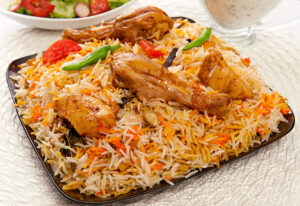
Sindhi Biryani stands as a crown jewel of Sindhi dishes. It carries spicy meat, usually with a tender potato with a tender potato with chicken, mutton or beef. The dish is made more delicious with a generous amount of fried onions, fresh mint and green chili. The mixture of spices gives it a violent taste, but still keeps the balance between aromatic rice comfortable. This dish is popular not in Sindh, but in Pakistan, which is loved for its rich aroma and bold taste.
Sindhi Kadhi

Sindhi Kadhi is a nutritious vegetarian dish that performs a drag. It is prepared using gram as a common base with the seasonal vegetables. The actual specificity of this curry comes from the use of Tamarind, which gives it a sour and slightly sharp taste. Sindhi Kadhi is usually served with boiled rice, making it a comfortable everyday meal for families in Sindh. Despite being simple, the flavor lies separate and deep in tradition.
Fried Fish
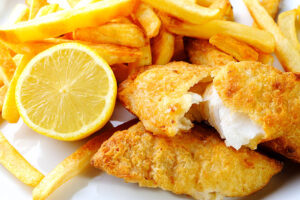
The fried fish is another head of the Sindhi kitchen, especially because of the abundance of fresh grip from the Indus River and the Arab Sea. The fish is spiced with chili, turmeric and other spices, until they are golden and sharp. Street vendors in Sindh often sell this dish, making it a favorite piece for the locals. The spicy crust and juicy Sindhi exposes love to bold and right taste.
Karachi Cuisine
Karachi stands as the food capital of Pakistan where every taste of the nation gets a house. Being the largest city brings people from all the provinces together, and they bring their specific food traditions. Karachi never sleeps from the corners of the oriented road to the elegant restaurant. The aroma of spices fills the air, and each dish tells the story of the city’s diversity.
Karachi Biryani
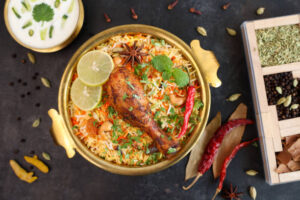
All food about karachi is not fulfilled without biryani. This version is the most spicy and bullet, which is layered with marinated chicken or beef, long-naz rice, potato and fierce green chili. The mixture gives a rich and vibrant taste, for each grain. Khushboo attracts people alone, which is why Karachi Biryani has a well -known place in the hearts of food lovers.
Bun Kebab

Ban kebab is Karachi’s response to the burger, but with a local appeal. A juicy, spicy beef sits inside a soft bunion, often with tangi sauce, chopped onion and a fried egg. There is a snack found on almost every corner, which is served warm with a sizzling pan. Bun kebab, simple, fast and tasty, leads to the real feeling of street food culture in Karachi.
Nihari
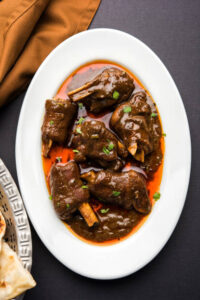
The Mughal kitchen has Nihari’s roots, but Karachi gave it its style. It makes slowly cooked beef for hours until the meat is tender and the sauce is thick in perfection. Many restaurants in Karachi continue to cook the Nihari tools overnight, so customers can enjoy fresh and warm food in the morning. It is a plate of comfort and tradition, which is often eaten with Naan, which makes breakfast unforgettable in Karachi.
Islamabad Cuisine
Islamabad provides a calm and elegant food culture. The city mixes the tradition of cleansing, where restaurants and hotel classic Pakistani dishes provide a Polish turn. From breakfast in the street to good food, you get flavors that feel both relaxed and sophisticated.
Seekh Kebabs
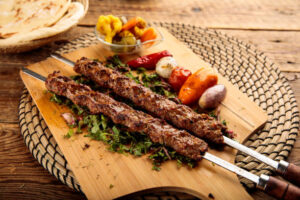
The meat made with spices and herbs mixed with spices and herbs is pressed on the shovel before grilling the flames on the open flames. In Islamabad, the same humble kebab comes with a sophisticated presentation on your plate, often combined with coin chutney and fresh salad. Smokey scent and delicate spices separated him.
Chicken Handi
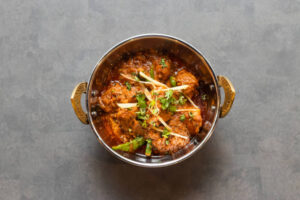
Serving heat and flavored ground couplings are served, chicken hand is rich, creamy and full of depth. Butter, cream and light spices make a silk sauce that covers the chicken pieces. There has been a signature right in the restaurant of Islamabad, which loved both its taste and its rustic serving style.
Halwa Puri
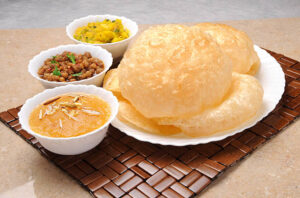
In Islamabad, the morning often begins with Halwa Puri, a traditional snack that never goes out of style. Mulayam, puffed puris arrive with sweet semolina pudding and spicy chickpeas. Hotels and restaurants often include this platter in the breakfast buffet, giving visitors to Pakistani morning authentic flavor.
Essential Ingredients in Pakistani Cuisine
Pakistani recipes rely on a few core ingredients.
- Basmati rice from Guard or Falcon brands
- Shan and National masalas for reliable blends
- Ghee for richness
- Fresh garlic, ginger, and green chilies
- Yogurt for balance
- Lentils and chickpeas for protein
- Coriander, cumin, and garam masala for aroma
Each ingredient plays its role in creating balance.
Cooking Methods in Pakistan Food
Pakistani food celebrates patience and technique.
- Dum cooking locks steam for biryani.
- Tandoor ovens add smoky flavor to naan and kebabs.
- Bhuna releases spice aroma in oil.
- Clay handi cooking deepens curry taste.
Modern kitchens now adapt these techniques using slow cookers and pressure cookers.
Also Read Indian Street Food
Tips for Enjoying Pakistani Food Like a Local
Pakistani dishes is not just about taste, it is about culture, connection and good luck sharing. In order to enjoy it as a local, you must actually embrace traditions that make each food special. Biryani always feels perfect when combined with cool raita and fresh salad, balancing spices with a fresh touch. Naan is immersed directly in southern karahi, there is another experience you should never miss, because the bread directly sucks the taste richly in the forehead.
Tea plays a big role in food culture, and the Doodh strip is the right way to eliminate spicy foods. The creamy sweetness soothes the taste buds and satisfies you. Sharing food with friends and family from a single board combines dining experience warmly as it reflects a sense of deep inherent solidarity in Pakistani traditions.
Street food has a special place in the hearts of the locals. This is always the best taste when freshly eaten in the booth, surrounded by lively sounds and aroma of roads. Whether it is Calvaappa, Samosas or Kebabs, they eat warmth and flavors live on the spot.
Nutritional View of Pakistani Foods
Pakistani Food Combines Rich Tastes With Miscellaneous Nutrition. Lenses, beans and vegetables add protein, fiber and vitamins. Meat dishes such as kebabs and curry provide strength through protein and iron. Energy by Biryani and bread from rice and wheat. Spices like turmeric and cumin support digestion and immunity. Cases of balance, as fried snacks and creamy sauce can be heavier when eaten often.
Conclusion
Pakistani food keeps the essence of culture, heritage and diversity on each record. It combines rich spices, fresh materials and timeless dishes performed through generations. To serve luxury hotels from the roadside to warm kebabs, take dishes for every taste and opportunity and to start sophisticated Biryani and Nihari.
It only gives more than taste – it tells the story of local communities, traditions and ceremonies. Whether you prefer a chicken karahi’s bold spices, the rest of the lens or the sweetness of Gulab Jamun, Pakistani food promises an unforgettable journey.
For anyone who discovers this dish, it stands as a wonderful symbol of hospitality and warmth, and unites people on split foods and nutritional taste.
FAQs
Q1: What is the national dish of Pakistan?
Many people see both Nihari and Biryani as a strong challenger for the title of Pakistan’s national law. Nihari, a slow boiled beef stew, has experienced deep cultural values with rich spices and is often enjoyed as a solid breakfast. On the other hand, Biryani represents festivity and diversity, giving its differences to all regions. The popularity of both kitchens makes it difficult to choose just one as a real national dish.
Q2: Which Pakistani dishes are most popular worldwide?
In countless dishes, some stand out for their international fame. Biryani is loved all over the world for its aromatic rice and soft meat. Chicken Karahi attracts food lovers with her bold, spicy taste and is a main attraction at Pakistani restaurants abroad. SEEK KEBAB often becomes a favorite for those who like grilled dishes, while Helim appeals to a nutritious and food -filled people, with its comfortable blend of pulses and meat. These dishes show the diversity and depth of Pakistani food.
Q3: Can I cook Pakistani foods in a slow cooker?
Yes, many traditional cuisines adapted well with slow cooking. Nihari, which must be cooked for a long time, becomes rich and tasty when it is ready in a slow stove. Haleem also benefits from this method, as lenses and meat are basically mixed over time. Even the taste of chicken korma or lenses gets a chance to cook gradually. The slow stove not only saves the best, but also catches the authentic taste of traditional food.
Q4: What is the healthiest Pakistani food?
A plate made with lenses, pulses and spices is one of the most healthy options because it is high in protein and fiber, but low fat. Grilled kebab also provides a nutritious alternative when packed with proteins and avoids excess oil. Saag, prepared with spinach and other greens, is rich in vitamins and minerals and has been part of the traditional diet for generations. These foods show that Pakistani food provides balance by combining taste with nutrition.
Q5: Which city offers the best Pakistani food?
Each larger city brings its attraction to the Pakistani food. Karachi is observed for his diversity, which offers street foods, good food and countless Biryani versions. Lahore is known for its bold taste and cordial meal that reflects its lively food culture from spicy karahi to melt-in-the-mouth kebab. Islamabad provides a more sophisticated experience, often served at blurry restaurants and hotels, where traditional dishes are combined with elegant presentation. Each city contributes to its own way in the rich food identity in the country.
